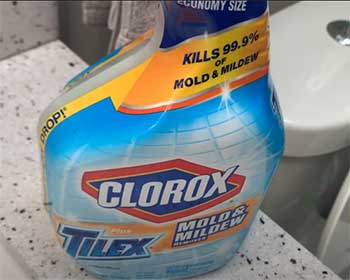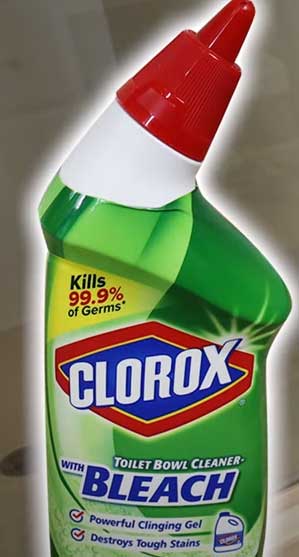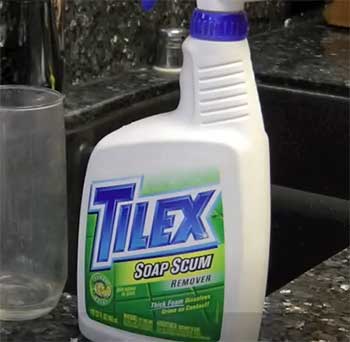When it comes to tough bathroom and kitchen messes, Tilex and Clorox are two of the biggest names in cleaning products. But which one should you choose – Tilex or Clorox?
Both brands offer a range of cleaning solutions for tackling dirt, grime, mold, and mildew. However, there are some key differences between Tilex and Clorox that are worth considering before you make a purchase.
In this comprehensive guide, we’ll compare Tilex and Clorox cleaners side-by-side, looking at their ingredients, uses, safety, and effectiveness.
A Brief Comparison Table
| Feature | Tilex | Clorox |
| Origins | Founded in 1932 as a tile and grout cleaner | Founded in 1913 as liquid bleach company |
| Key Active Ingredients | Bleach, abrasives, acids | Bleach, thickeners, fragrances |
| Product Focus | Specialized tile, grout, mold cleaners | Broad range of disinfectant cleaners |
| Types of Formulas | Sprays, gels, foams | Sprays, wipes, liquids |
| Scrubbing Power | Stronger abrasives cut through grime | Gentler cleaners for everyday use |
| Grout Cleaning | Excellent removal of stains and discoloration | Moderate grout whitening ability |
| Toilet Cleaning | Moderate stain removal and disinfecting | Thick gels cling to bowl surfaces |
| Mold and Mildew Fighting | Highly effective at removing mold and disinfecting | Moderate mold removal for common household use |
| Safety | Harsher chemicals require caution | Gentler cleaners suitable for more surfaces |
| Price | Mid-range | Economical |
| Best Uses | Tough tile, grout, bathroom cleaning | Lighter cleaning and disinfecting tasks |
A Brief Background on Tilex and Clorox
First, let’s start with some background on these two cleaning product giants.

Tilex was first launched in 1932 by the Parson Ammonia Company.
It was originally marketed as a grout cleaner and sold in a powder form that users would mix with water.
Over the decades, Tilex expanded into a line of household cleaners for bathrooms and kitchens.
Today, Tilex is owned by Clorox and offers numerous spray bottle cleaning solutions.
Clorox got its start back in 1913 when five entrepreneurs invested in a liquid bleach startup business called the Electro-Alkaline Company. That company was renamed Clorox Chemical Co. in 1922 and popularized liquid chlorine bleach for household use.
Like Tilex, Clorox expanded over the years into a whole suite of cleaning and disinfecting products.
So in a nutshell – Tilex pioneered grout and tile cleaning solutions, while Clorox pioneered the household liquid bleach category. Although Clorox now owns the Tilex brand, the two product lines remain distinct.
Now let’s look more closely at how Tilex and Clorox cleaners compare when it comes to ingredients, use cases, safety, and effectiveness.
Active Ingredients in Tilex And Clorox
The active cleaning ingredients found in Tilex and Clorox products include:
Tilex Ingredients:

- Bleach (sodium hypochlorite) – powerful disinfectant and whitening agent
- Acid such as phosphoric, hydrochloric, or citric acid – helps dissolve mineral deposits, soap scum
- Surfactants – grease-cutting agents that allow grime to be rinsed away
- Abrasives – scouring particles to scrub surfaces
- Ammonia – cuts through grease and adds sanitizing properties
Clorox Ingredients:
- Bleach (sodium hypochlorite) – disinfects and removes stains
- Thickening agents – prevents bleach from running or dripping
- Surfactants – grease removers
- Fragrances – for pleasant scent
- Anti-corrosion agents – prevents bleach from damaging surfaces
So at their core, both Tilex and Clorox cleaners contain bleach as the star ingredient. Tilex does feature more abrasives and acids, while Clorox focuses more on thickening agents and fragrances.
Cleaning Uses for Tilex and Clorox
Given their different formulations, here are the typical uses for Tilex vs. Clorox:
Tilex Use Cases:
- Removing soap scum
- Scrubbing grout
- Polishing tiles
- Cleaning mold and mildew
- Shining fixtures and chrome
- Degreasing ovens and cooktops
- Tackling limescale buildup
- Disinfecting surfaces
Clorox Use Cases:
- Disinfecting and sanitizing
- Deodorizing
- Removing stains from laundry
- Brightening whites
- Cleaning and scrubbing sinks, tubs, counters
- Mopping floors
- Wiping down finished wood
- Cleaning glass, windows, mirrors
- Degreasing appliances
So Tilex products are ideal for really scrubbing down grimy tile and grout. Clorox offers lighter duty disinfecting and cleaning for a wider variety of household surfaces.
Are Tilex and Clorox Safe to Use?
Both Tilex and Clorox contain bleach, which can irritate eyes, skin, and the respiratory system if inhaled or exposed to for too long. Other potential risks include:
- Skin and eye burns from chemicals
- Lung irritation from fumes
- Nausea or dizziness from strong odors
- Exacerbated asthma or allergies
To use either Tilex or Clorox safely:
- Wear protective gloves and eyewear
- Work in a well-ventilated area
- Never mix products containing bleach or ammonia
- Rinse surfaces and allow to fully dry after cleaning
- If irritation occurs, rinse and get fresh air
- Keep products out of reach of children
Tilex does contain stronger acids and abrasives than Clorox. The gritty abrasives in Tilex also make it more likely to scratch certain surfaces like natural stone.
As with any cleaning chemical, be sure to check the label and follow usage directions. Never transfer the product to an unmarked container.
How Effective Are Tilex and Clorox?
Both Tilex and Clorox offer highly effective cleaning, if used properly for the right messes. Some key points:

- Bleach is excellent at disinfecting, removing stains, and whitening most surfaces.
- Acids in Tilex help dissolve mineral deposits and soap scum that bleach alone can’t tackle.
- Abrasives in Tilex scour away grime that other cleaners would leave behind.
- Tilex with ammonia adds extra cleaning power for grease.
- Thickeners in Clorox help the bleach cling and prevent drips on vertical surfaces.
- Fragrances in Clorox products leave a pleasant scent after cleaning.
Independent testing has found both brands provide stellar cleaning results when matched to the right use case.
Tilex Ultimate Grout Cleaner was rated 93% effective at brightening grout back to like-new condition. Clorox Disinfecting Wipes received a 99.9% rating for eliminating bacteria within 5 minutes.
So you really can’t go wrong with either brand – as long as you pick the right formula for the type of cleaning job.
Tilex and Clorox Product Lineups Compared
Tilex and Clorox each offer a wide range of cleaning solutions. Here’s a look at some of their most popular products and how they differ:
Bathroom Cleaners
- Tilex Mold and Mildew Remover Spray: Powerful stain-fighter powered by bleach and other antimicrobial ingredients to remove mold, mildew and soap scum on shower walls and curtains.
- Clorox Toilet Bowl Cleaner with Bleach: Thick cling gel formula coats toilet bowl to clean and disinfect. Special curved bottle targets hard to reach spots.
- Tilex Soap Scum Remover: Features an acid formula that dissolves away soap scum, mineral deposits, and rust stains. Use on fiberglass shower enclosures, tile, chrome and glass.
- Clorox Disinfecting Bathroom Cleaner: Cleans soap scum, mold stains, and mildew while also disinfecting the surface. Leaves a fresh scent. Gentler than Tilex for finished surfaces.
Multi-Purpose Cleaners
- Tilex Daily Shower Cleaner: Spray foam clings to vertical shower surfaces to allow bleach anddetergents to penetrate and dissolve soap scum. Rinses easily with no abrasives.
- Clorox Clean-Up All-Purpose Cleaner with Bleach: Value-sized bottle of powerful foaming spray cleaner and degreaser for kitchens, bathrooms and other rooms. Bleach-based formula.
- Tilex Mold & Mildew Remover: Spray designed to remove mold stains and disinfect damp areas like windows, laundry rooms and basements. Clings to reach hidden mold.
- Clorox Scentiva Disinfecting Foam Soap: Multipurpose antibacterial foaming cleaner and soap formula for hands, face and surfaces. Available in multiple scents.
Grout and Tile Cleaners
- Tilex Grout Pen: Convenient applicator pen allows you to scrub bleach-based formula deep into grout lines and scrub away discoloration. No rinsing needed.
- Clorox Tilex Mold and Mildew Remover: Spray targets existing mold and mildew stains on grout or tiles. Foaming bleach formula seeks out and sticks to stains.
- Tilex Ultimate Grout Cleaner: Heavy-duty grout whitener with powerful acidic formula to deep clean and whiten discolored or dingy grout throughout the home.
- Clorox Tilex Soap Scum Remover: Aerosol spray specialist designed to cut through built-up layers of soap scum on tile and grout. Less intense than Tilex Ultimate formula.
Wipes
- Tilex Mold and Mildew Remover Wipes: Ready-to-use wipes with bleach cleaner to quickly tackle mold and soap scum on the go. Convenient for travel or quick touch-ups.
- Clorox Disinfecting Wipes: Kills 99.9% of bacteria and viruses. Bleach-free formula safe for finished surfaces. Variety of scents available like Crisp Lemon and Fresh Scent.
Laundry Stain Removers
- Tilex Oxi Multi-Purpose Stain Remover: Oxygen-powered formula lifts out organic stains on laundry, upholstery, bedding, and carpets before washing. Also tackles pet stains.
- Clorox 2 Laundry Stain Remover and Color Booster: Removes tough set-in stains while also brightening colors. Safe for regular and HE machines. Liquid or convenient wipe formula.
Frequently Asked Questions (FAQ)
While bleach is the key ingredient, Tilex products also contain other cleaning agents like acids, abrasives, and surfactants to tackle specific types of messes that bleach alone cannot remove.
Yes, the Tilex brand is currently owned by Clorox. It was an independent company for many decades until Clorox acquired it. The Tilex name remains on products specially formulated for tile and grout cleaning.
For tough soap scum, mold, mildew, and grout stains, products with bleach and acid formulas work most similarly to Tilex. Good alternatives include Lysol Power Toilet Bowl Cleaner, ZEP Grout Cleaner, and Scrubbing Bubbles Extra Power Bathroom Cleaner.
There’s no exact equivalent since Tilex offers specialized tile, grout, mold, and mildew cleaners. But to replace Tilex’s multi-purpose cleaner, some good alternatives include Mr. Clean Multi-Surface Cleaner with Gain, Lysol Daily Cleanser, or Comet Disinfecting Bathroom Cleaner.
The Bottom Line
When comparing Tilex vs. Clorox, both brands offer top-notch cleaning power using the sanitizing properties of bleach. Tilex specializes in formulas tailored to soap scum, mold, mildew, and grout.
Clorox focuses more on light-duty disinfecting and brightening for varied surfaces throughout the home.
Within the Tilex family, look for the mold removers, grout pens, and ultimate grout cleaner for tough tile and bathroom messes. Clorox all-purpose cleaners, wipes, toilet bowl cleaners, and laundry boosters are great for maintenance cleaning.
No matter which brand you choose, always take safety precautions and never mix with other chemical products. With proper usage, Tilex and Clorox provide the cleaning muscle you need to conquer tiled bathrooms, grubby grout, greasy ovens, and stained laundry.
Get cleaning and prepare to be amazed at the sparkling results!

What is the difference between ‘Clorox Mold and Mildew remover with Tilex’ and straight Tilex?